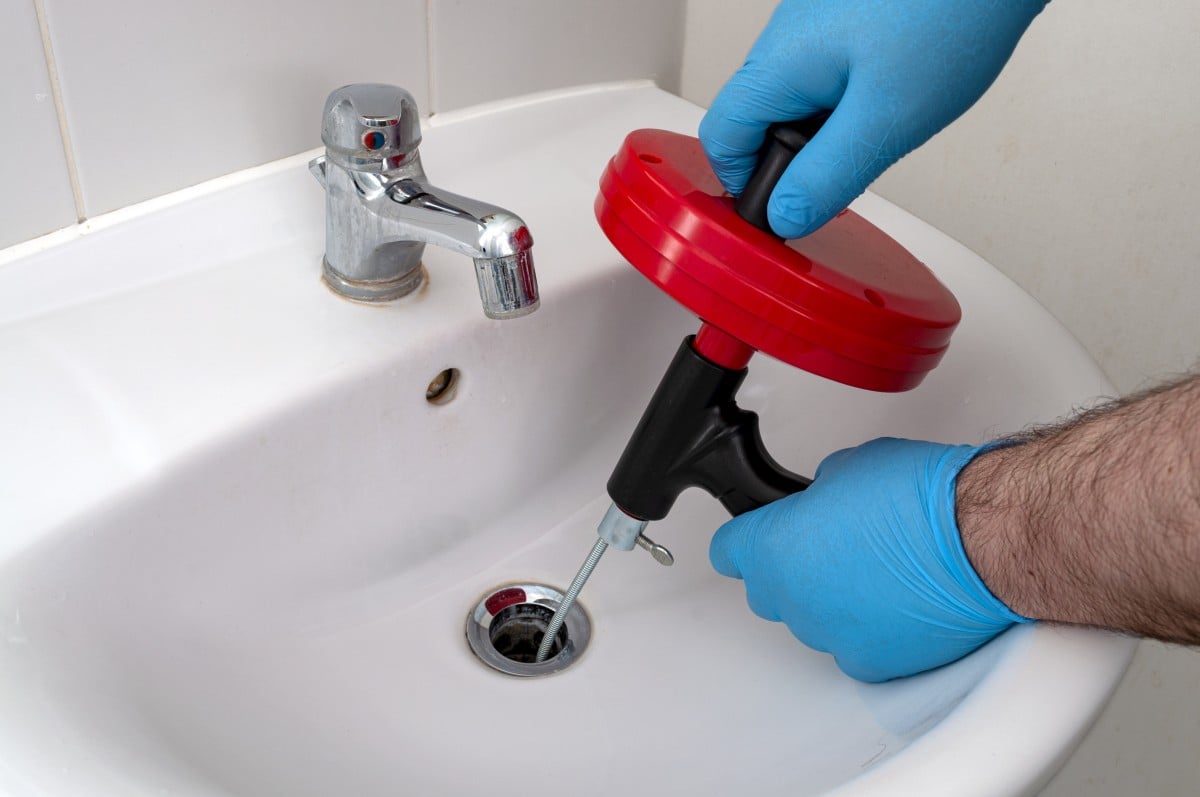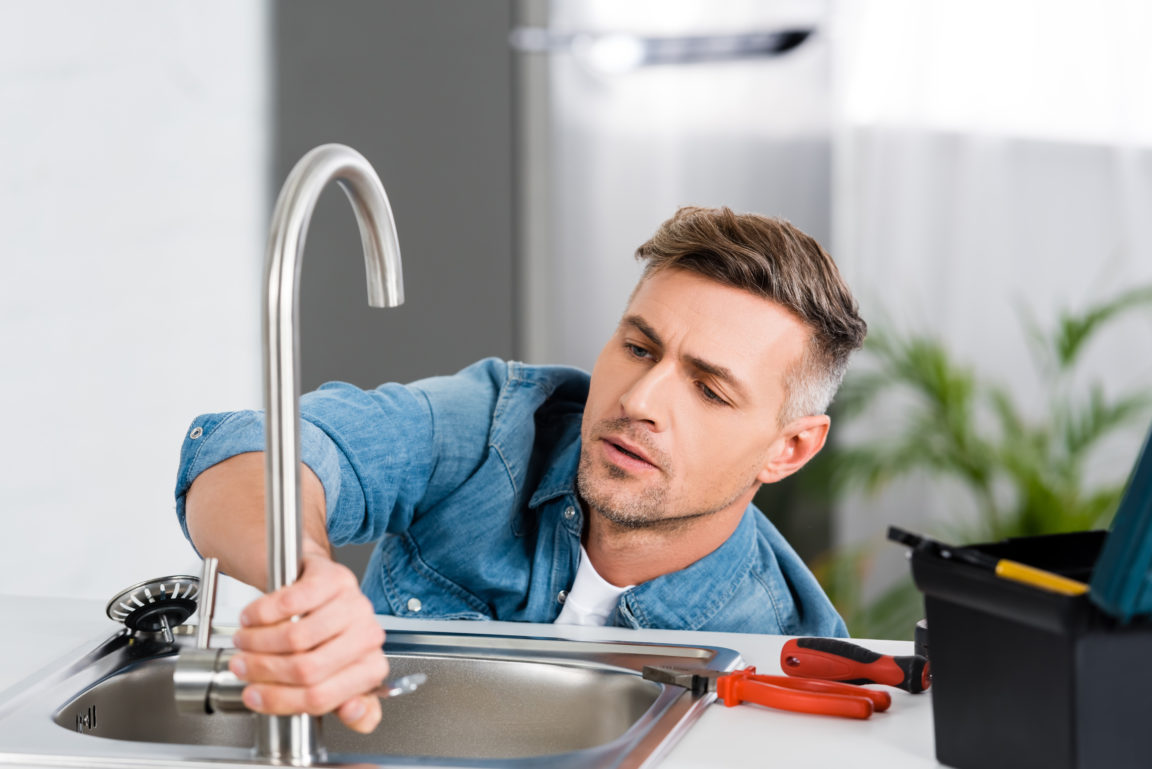Why Your Kitchen Sink Stays Stagnant - 6 Key Reasons For Poor Drainage
Why Your Kitchen Sink Stays Stagnant - 6 Key Reasons For Poor Drainage
Blog Article
We have discovered the article about What To Do When Your Kitchen Sink Won’t Drain directly below on the internet and believe it made perfect sense to relate it with you here.

It's not regular for your cooking area sink to block multiple times in one month. If your sink blocks twice a week, there's some difficulty going on.
An obstructed kitchen area drainpipe does not simply decrease your duties, it weakens your whole plumbing system, gradually. Below are some usual habits that encourage sink blockages, and how to avoid them.
You need proper waste disposal
Recycling waste is fantastic, however do you take note of your organic waste as well? Your kitchen area ought to have two separate waste boxes; one for recyclable plastics and another for organic waste, which can come to be garden compost.
Having actually a marked trash can will certainly assist you as well as your household prevent throwing pasta and various other food residues down the tubes. Generally, these residues soak up wetness and become obstructions.
The mistake isn't from your kitchen area sink at all
Possibly the issue isn't from your kitchen area sink, but the entire drainage system. In such an instance, you might observe that other sinks and drains obtain blocked every other week. You need a professional plumbing service to repair this.
You're tossing coffee down the tubes
Used coffee premises as well as coffee beans still take in a significant quantity of dampness. They may seem little sufficient to throw down the drain, but as time takes place they start to swell and occupy even more area.
Your coffee grounds need to enter into organic garbage disposal. Whatever portion leaves (perhaps while you're depleting) will be looked after throughout your regular monthly clean-up.
You have actually been consuming a lot of oily foods
Your kitchen area sink may still obtain blocked despite having natural waste disposal. This might be since you have a diet abundant in greasy foods like cheeseburgers.
This oil coats the within pipes, making them narrower as well as more clog-prone.
Utilize a bettor
Your pipeline had not been repaired effectively in the first place
If you have actually been doing none of the above, however still obtain regular blockages in your kitchen sink, you should call a plumber. There could be an issue with just how your pipes were set up.
While your plumber gets here, check for any kind of leakages or abnormalities around your kitchen area pipelines. Do not try to fix the pipes on your own. This may trigger a crash or a kitchen area flooding.
Someone tried to clean their hair in the kitchen sink
There's a right time and also place for whatever. The cooking area sink is simply not the right place to wash your hair. Cleaning your hair in the cooking area sink will certainly make it clog eventually unless you utilize a drainpipe catcher.
While a drainpipe catcher could capture most of the fallouts, some strands might still make it through. If you have thick hair, this may suffice to reduce your drainage and ultimately create an obstruction.
There's more dirt than your pipes can manage
If you obtain fruits straight from a farm, you may discover even more cooking area dust than other people that shop from a shopping center. You can quickly repair this by cleaning up the fruits and also veggies effectively before bringing them into the house.You need appropriate garbage disposal
My Kitchen Sink Won’t Drain - What Should I Do?
If Your Sink Has a Garbage Disposal...
Turn on the disposal. If the disposal hums and doesn’t turn, then there’s clog in the disposal unit.
Go to your circuit breaker panel, and switch off the circuit breaker to your garbage disposal.
Back in your kitchen, double-check that your garbage disposal is off by trying to turn it on. The disposal should not move, and it should not make any noise.
Lie down underneath your sink so that you can see and access the bottom of the disposal unit. Look for a hole that looks like the head of a hex-head bolt in the center of the unit.
Place an Allen wrench inside this hole and turn it from side to side until you feel a decrease in resistance and are able to rotate the wrench completely in a single direction. This action rotates your disposal’s blade manually.
Put the wrench aside, and press the disposal unit’s reset button or switch.
Flip your garbage disposal’s circuit breaker switch back on, and turn on the unit to see if the obstruction has cleared. If it hasn’t, repeat the steps above until the obstruction is removed.
How to Unclog a Kitchen Sink Drain
If you have a double bowl sink, seal one side of the sink with an airtight lid or a second plunger before plunging the other side. Otherwise, you won’t be able to create adequate suction.
Place the cup of the plunger completely over the drain opening.
Turn on the faucet, and let the water run until it completely covers the cup of the plunger.
Start plunging by pushing the plunger down and pulling up again in order to build up suction. Make sure that the edges of the plunger stay in contact with your sink, or else you’ll lose the suction.
If you have trouble forming a seal between your sink and plunger, add petroleum jelly to the mouth of your plunger, and try again.
Plunge about five or six times before removing the plunger to see if water starts to drain properly. In some cases, you’ll even be able to feel the clog become dislodged while you plunge because suddenly there will be much less resistance. Repeat the plunging process until the clog clears.
Once water is draining properly again, run hot water down the drain for 5 minutes to help clear away grease, grime, and debris from the clog. https://www.plumbingjoint.com/blog/2019/august/my-kitchen-sink-won-t-drain-what-should-i-do-/

My Kitchen Sink Won’t Drain - What Should I Do?
If Your Sink Has a Garbage Disposal...
How to Unclog a Kitchen Sink Drain
https://www.plumbingjoint.com/blog/2019/august/my-kitchen-sink-won-t-drain-what-should-i-do-/
I found that blog post on What To Do When Your Kitchen Sink Won’t Drain when perusing the search engines. Are you aware of someone else who is excited by the subject? Do not hesitate to promote it. We appreciate reading our article about Five Ways to Fix a Slow Sink Drain.
Request An Estimate
Report this page